Bethany Road, Bethany
First organ: B c.1850 J.C.A. Kruger;
installed & enlarged St Thomas' Lutheran Church, Stockwell 1929 J.E. Dodd;
res 1981 Roger Jones; missing pipework replaced 1987 Roger Jones.
1 manual, 7 speaking stops, 1 coupler, tracker, Man: 8.8.8.4.4.2. Ped: 16.
Present organ: B 1929 J.E. Dodd. 2 manuals, 8 speaking stops, 4 couplers, tracker
Rebuilt & enlarged 1989 George Stephens.
2 manuals, 11 speaking stops, 4 couplers, tracker
Gt: 16.8.8.8.4. Sw: 8.8.4.2.II. Ped: 16.
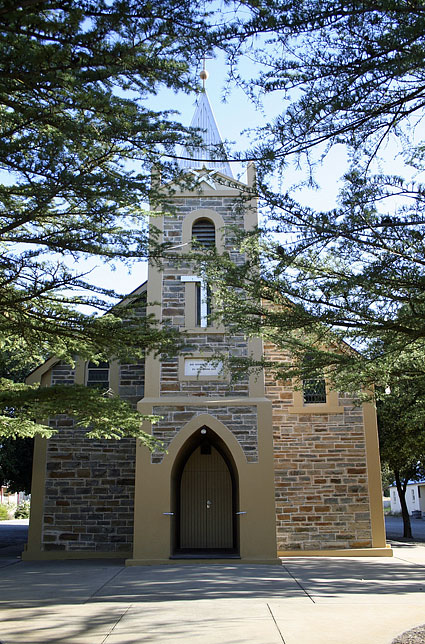

From Historic Organs of the Barossa Valley, Volume 1:
The settlement at Bethany preceeded that of Langmeil nearby in Tanunda by only a few months. The first church was built in 1845 by a group of settlers under Pastor Gotthard Daniel Frietsche and was replaced by the present structure in 1882. Doctrinal differences with Pastor Kavel, who ministered to the Langmeil congregation, saw two "mother" churches evolve, smaller groups aligning with either one. The first organ at Bethany is now to be found in St Thomas' Lutheran Church, Stockwell, being replaced by the present instrument which was dedicated on 20 November, 1929. It appears to have remained in original condition until 1989 when a Principal 4', Fifteenth and two rank Mixture were added by George Stephens.
| Great Open Stopped Diapason Dulciana Principal Swell Melody Hohl Flute Gamba Dulcet Fifteenth Mixture Pedal Bourdon Couplers Swell to Great Swell octave coupler Swell to Pedal Great to Pedal |
8 8 8 4 16 8 8 4 2 II 16 |
1989 Stephens F above middle C 1989 Stephens 1989 Stephens |
tracker action
located in west gallery
From
the 2009 OHTA Conference Book, David Shield writes:
The
origins of the first organ at Bethany are somewhat clouded. That an organ was installed is quite
clear but in the absence of church records, or a builder’s nameplate, neither
the builder nor its date of acquisition can be definitively stated. By comparison with another instrument
it is reasonable to come to the conclusion that it was built by J.C.A. Krüger
prior to his moving to the Western District of Victoria in 1855. The constant repair required on the
first organ led to the decision to purchase a new instrument in 1928. After
a harrowing voyage, Pastor Gotthard Daniel Fritzsche and his congregation
arrived at Port Adelaide on Wednesday 27 October 1841. He went briefly to Klemzig before settling
at Hahndorf. When members of his
congregation purchased land at Lobethal, Fritszche decided to reside there,
much to the disappointment of those of his flock who had moved north.1 Early
in 1842 a portion of Pastor Fritsche’s congregation from Klemzig moved to the
district of Bethany. By 1 July
1845 a spacious, thatch-roofed church had been constructed and was
dedicated. A school had been
started two years before to be led by Friedrich Topp for 44 years, with August
Friedrich Hensel following from 1888 to compulsory closure of the school in
1917.2 Apart from their
long service as teachers, both men were organists of the church, Hensel finally
retiring in 1938.3
Initially the pastoral needs of the congregation were served both by
Kavel and Frietszche until the workload of the latter demanded help. As a result A.E. Meyer, a Dresden
Missionary to the aborigines, was called to forgo his calling and become the
first resident pastor to Bethany, being installed in April 1848.4 The
exact date of the installation of the organ at Bethany is not known. Frietszche and his wife were both very
musical so it would not be surprising to find their interest extending to the
provision of an instrument in the church.
However, original minute and cash books for the founding years at
Bethany do not exist. We can tell
the organ was at Bethany in the time of Pastor Meyer. The financial records for 1861, 1864, and 1867 indicate that
the organ required frequent repair.
The provenance was not revealed by Pastor G.A. Heidenreich [1866-1910]
who is quoted as saying that in due course the church had “the most beautiful,
largest German organ here in the country”. Further repairs were carried out by Daniel Lemke in 1874 and
1875 and in February 1879 he gave it an overhaul that required 11 days. For this he was paid £6 while Topp the
local teacher received 11/- for providing board and lodging and Mr Reimann
received 15/- for feeding Lemke’s horse.5 In 1918 the old organ was again thoroughly repaired.6 The
conventional wisdom is that J.C.A. Krüger built the organ. A pioneer organist and organbuilder, he
apparently resided at Hoffnungstahl, having arrived in the Colony in 1848. Little is known of his years in South
Australia. His name does not
appear on the pioneers memorial for Hoffnungstahl nor does he appear to have
owned land in that
The
current church was constructed during 1882 by Johannes Basedow of Tanunda.
Named Die Herberge Christi zu Bethanien (The Dwelling-place of Christ at
Bethany), and dedicated on 24 June 1883, one commentator has suggested that “it
lacks some of the architectural refinement evident in later and larger Lutheran
churches. Its simple nave is even without a sanctuary such as the one provided
for in the Immanuel Church Light Pass, but its brightly coloured glass single
lancet windows, boarded ceiling and polished timber pews produce a dignified
church interior .The tower has one bronze bell cast in 1881 at the foundry of F
Otto, Hemelingen, Germany. It
rings out the tone of C#, is 670mm at the mouth and weighs 170 kg.8 In
November 1928, the Bethany congregation decided that they would prefer to buy a
new organ rather than repair the old.
The appointed committee had contacted Mr Dodd for quotations on single
and two manual instruments costing £580 and £750 respectively with £75 allowed
for the old organ. A subscription
list was opened but contact with a second firm was required. In January the following year the
committee reported that they had visited Mr Roberts who had an almost completed
organ but they were not favourably impressed, preferring the work of Dodd and
recommending the congregation order the more expensive option. This was unanimously agreed to, the
committee being required to carry out the order.9 Additional
costs were incurred. For
ventilation, a fan was to be installed, but not above the organ; extra space
was required, the choir had to be made broader and lower; and a much larger
water meter was needed for the organ’s water engine. Collection
of subscriptions was to be on the day “soon after the payment day for
grapes”. By 2 February it was
reported to the congregation that subscriptions had raised £821/16/8 without
interest and spent £791/18/1 for the organ fund. Part of the moneys raised included £9/10/- raised at the
dedication service and the excess was to go to the church coffers. The organ committee and all involved were
thanked.10 The
organ was duly installed and dedicated on 20 October 1929, being played by
guest organist Theodor Geyer. The
evening service was the first Lutheran service to be broadcast by the ABC and
was followed by a sacred concert.11 At this point the organ had 13 stops including tremulant
with guarantee for seven years.12 The
old organ was traded for £75.
After renovation and the incorporation of additional pipes by J.E. Dodd
& Sons it was eventually installed in St Thomas Lutheran Church, Stockwell. Between
April and September 1989 George Stephens rebuilt the organ. Three new ranks were added, the swell
Fifteenth 61 pipes, the swell Mixture 122 pipes, and great Principal with a
further 61 pipes, bringing the total to 640 pipes in the organ. The swell box was extended to
accommodate the changes. J.E. Dodd & Sons 1929; enlarged George
Stephens Pty Ltd 1989 2 manuals, 11 speaking stops,
mechanical action GREAT ORGAN Open 8 Stopped Diapason 8 Dulciana 8 Principal 4 1989 Stephens Swell to Great SWELL ORGAN Melody 16 F above middle C Hohl Flute 8 Gamba 8 Dulcet 4 Fifteenth 2 1989 Stephens Mixture II 1989 Stephens Tremulant (by trigger
pedal) Swell Octave Coupler PEDAL ORGAN Bourdon 16 Great to Pedals Swell to Pedals Compass 61/30 attached
drawstop console balanced swell
pedal 4 combination pedals location: west
gallery Acknowledgement: I am
indebted to L. Zweck, of the Lutheran Archives for the translation of the
minute books from the German. 1 See: Brauer, A Under
the Southern Cross 1985, chapters
9 – 11 2 For Hensel, see:
Butler, R.A. College in the Wattles
1989, p.341 3 Brauer, op.cit. p.78 4 Brauer, ibid., p.85 5 Proeve, H.F., A
Dwelling Place at Bethany 2nd
ed 1996, p.33 6 150th Anniversary of
Herberge Christi Congregation and Settlement of Bethany 15 March 1992, p.14.
On the assumption that Dodd undertook the repair, the firm’s records for
the period are missing so no details are known. 7 Refer to section on
Stockwell for further detail 8 Barker S. (ed.) Explore
the Barossa 1991. p.33; Bagot H.,
‘Bells of the Barossa’, Journal of Friends of Lutheran Archives, No 10 (October 2000), pp.9-16 9 Bethany Parish,
Congregational Minute Book 1897-1932;
meeting 9 November 1928, p.261; ibid. 20 January 1929. 10 Ibid, p.263; ibid., 26 May 1929 p.269; ibid. 2 February 1930, pp.270-271 11 Proeve, op.cit., pp.
65-66 12 150th Anniversary
of Herberge Christi Congregation and Settlement of Bethany 15 March 1992, p.14
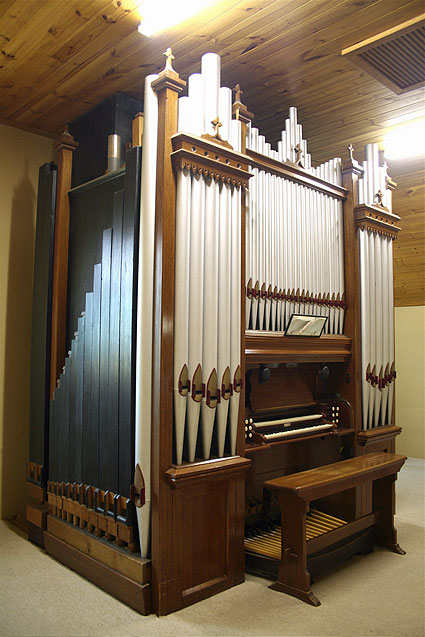
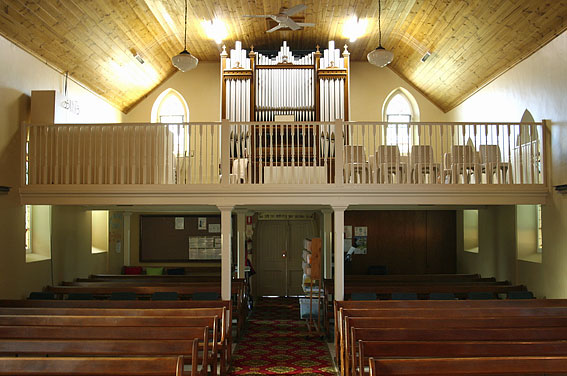
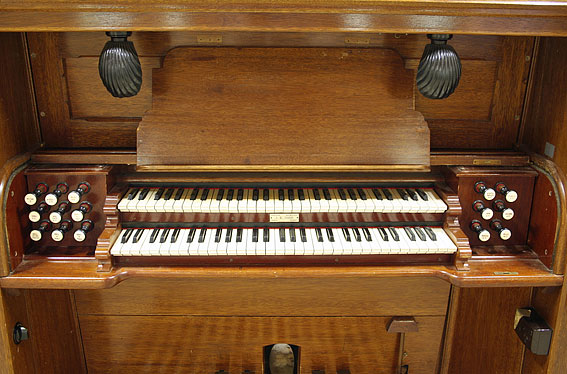
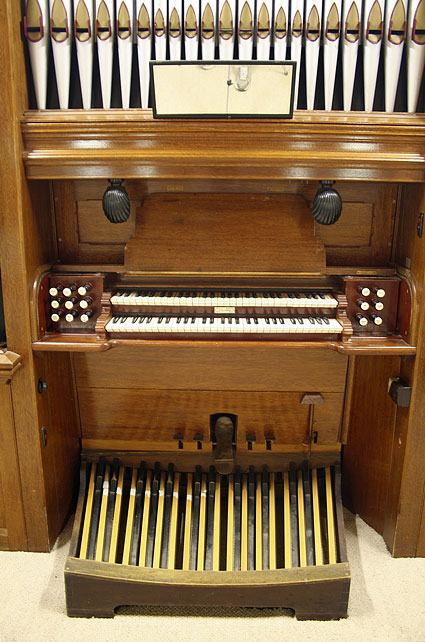
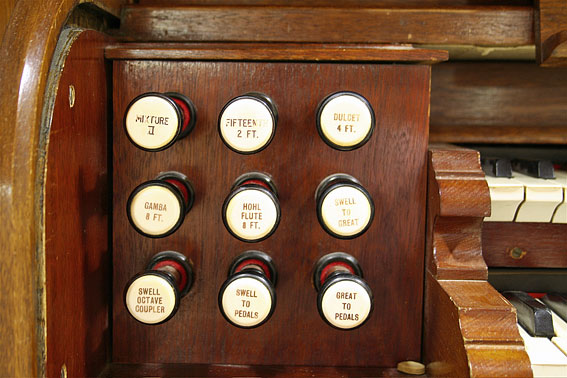
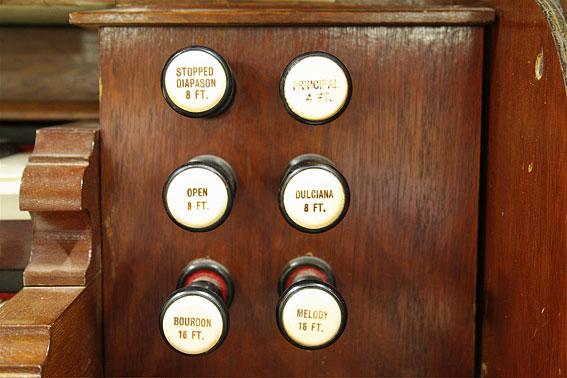

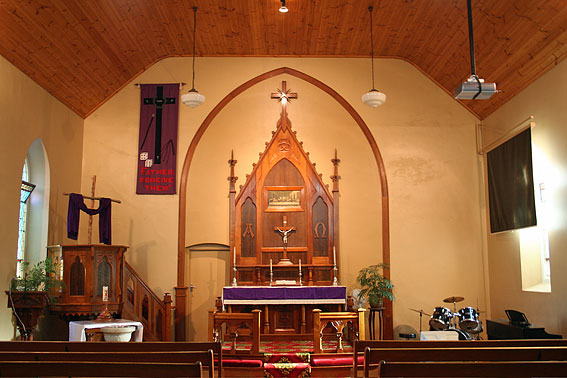
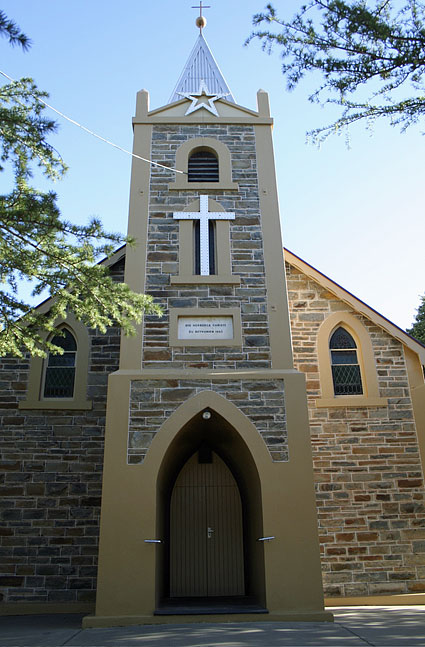

Photos: Trevor Bunning (March 2009)